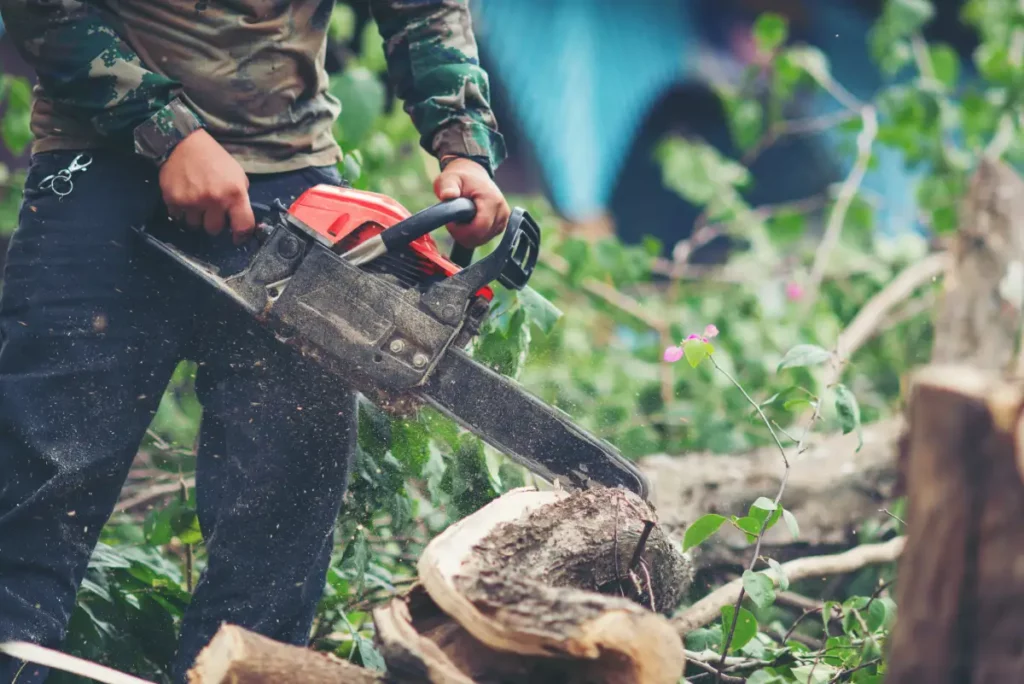The woodworking company is in a crisis in an era when environmental concern has become an essential concept. A seemingly insignificant consequence of woodworking activity, the fine mist of wood dust, emerges as a crucial role in the story of occupational health and environmental sustainability. This introduction dives into the multiple consequences of wood dust, emphasising the importance of mitigating its effects on the well-being of both workers and the environment.
Wood dust is produced when machinery or tools cut or shape wood. Sawmills and the furniture, cabinet, and carpentry sectors generate a lot of wood dust. The narrative of wood dust extends beyond the confines of health implications, weaving into the environmental tapestry. Unchecked emission of wood dust into the atmosphere doesn’t just end with occupational hazards; it contributes significantly to air pollution. This exacerbates respiratory conditions, especially in vulnerable groups like children and the elderly. The environmental footprint of wood dust also manifests in its detrimental impact on plant growth and ecosystem balance, spotlighting the broader ecological consequences of its presence.
Importance of Understanding Safe Exposure Limits for Wood Dust
In the intricate world of woodworking, where precision meets creativity, the presence of wood dust is an often underestimated concern. As a fine airborne particulate composed largely of microscopic wood fibres, wood dust represents a significant health hazard, infiltrating the respiratory system and causing various adverse effects. It’s not just a problem but a substantial threat to human health and environmental harmony. Understanding the safe exposure limits of wood dust is crucial for crafting effective strategies to mitigate its impact and ensure a sustainable, health-conscious future.
Navigating Exposure Limits for Safety
Recognising these risks, regulatory bodies such as OSHA and NIOSH have established exposure limits for wood dust in the workplace. These limits are crucial for safeguarding workers’ health. The critical metrics used are the Time-Weighted Average (TWA) and Short-Term Exposure Limit (STEL). TWA, typically measured over an 8-hour workday, reflects long-term exposure, while STEL, measured over 15 minutes, addresses the risks associated with short, intense exposure periods.
Current Regulatory Standards
- OSHA and NIOSH have set the following exposure limits:
- Hardwood Dust: TWA of 1 mg/m³.
- Softwood Dust: TWA of 5 mg/m³ and STEL of 10 mg/m³.
- Western Red Cedar Dust: TWA of 2.5 mg/m³.
The Imperative of Adhering to Exposure Limits
Staying within these prescribed limits is vital. Controlling wood dust levels can significantly reduce the risks of respiratory issues, allergic reactions, and severe diseases like nasopharyngeal carcinoma. This is not just a matter of compliance but of moral responsibility to protect workers’ health.
Understanding Wood Dust Exposure Limits
Understanding wood dust exposure limits is essential for devising strategies to mitigate these impacts, ensuring a safe and sustainable woodworking environment.
Understanding Exposure Limits
Regulatory bodies have established specific exposure limits to protect workers from the harmful effects of wood dust. These are typically measured in milligrams per cubic meter (mg/m³) and set the maximum permissible concentration of wood dust in the air over a defined period.
Define Exposure Limits (ELs)
Exposure limits (ELs) are critical benchmarks in occupational health, representing the highest concentrations of hazardous substances that workers can safely be exposed to over specific time frames. These limits are established by governmental bodies to safeguard workers from the adverse effects of harmful substances. Measured in various units like milligrams per cubic meter (mg/m³), parts per million (ppm), or fibres per cubic centimetre (f/cc), ELs are essential tools for maintaining safe work environments.
ELs are categorised mainly into Time-weighted average (TWA) and Short-term exposure limit (STEL). The TWA calculates the average exposure to a hazardous substance over an 8-hour workday, addressing long-term exposure risks. Conversely, the STEL denotes the highest concentration of a substance that workers can be exposed to for a brief period, typically 15 minutes, focusing on the risks associated with acute, high-intensity exposure.
Beyond TWAs and STELs are ceiling limits (CLs) and peak exposure limits (PELs). CLs set the maximum concentration level to which workers can be exposed at any given time without allowing overexposure. PELs, similar to STELs, indicate the top exposure level over a specified short period, often 15 minutes.
The determination of ELs considers several factors, including the substance’s toxicity, exposure routes, and individual worker susceptibility. These limits are not static but are periodically reviewed and updated to reflect new scientific insights and findings.
Difference Between TWA and STEL
TWA (Time-Weighted Average) and STEL (Short-Term Exposure Limit) are two critical metrics used in occupational health to set exposure limits for hazardous substances. Understanding the distinction between these two is vital for ensuring worker safety in environments with dangerous substances.
Time-Weighted Average (TWA)
The TWA represents the average exposure to a substance over a standard 8-hour workday. This measure safeguards workers against the long-term health effects of exposure to hazardous substances. By averaging exposure over an entire workday, the TWA provides a guideline for the maximum level of significance present in the workplace air without posing significant health risks over time. The TWA is particularly relevant for chronic health issues that develop over extended periods, such as certain respiratory diseases or cancers. For example, the TWA for hardwood dust might be set at 1 mg/m³.
Short-Term Exposure Limit (STEL)
On the other hand, the STEL pertains to the maximum concentration of a substance to which workers can be exposed for a short duration – typically 15 minutes. It focuses on preventing acute health effects from brief, high-intensity exposures. The STEL is crucial for substances that can cause immediate harm, such as irritation, dizziness, or respiratory distress, even in short bursts of exposure. For instance, the STEL for softwood dust might be set at 10 mg/m³.
Key Differences
Time Frame: The most significant difference between TWA and STEL lies in the period when exposure is measured. TWA is calculated over 8 hours, while STEL is assessed over 15 minutes.
Health Effects: TWA limits are geared towards preventing chronic health effects that develop over more extended periods of exposure. In contrast, STEL limits are designed to avoid acute health effects from short-term exposures.
Concentration Levels: Under STEL, workers might be exposed to higher substance concentrations for brief periods than permissible under TWA limits.
Both TWA and STEL are essential components of workplace safety regulations. Employers are mandated to comply with these limits. They implement safety measures such as engineering controls, personal protective equipment, and proper worker training to minimise exposure to hazardous substances. Understanding and adhering to TWA and STEL limits is crucial for maintaining a safe and healthy work environment.
Hardwood and Softwood Dust Exposure Limits
In the diverse field of woodworking, understanding and adhering to the distinct exposure limits for hardwood and softwood dust is critical for ensuring the health and safety of workers. Both types of wood dust present unique hazards, but due to differences in their composition and allergenic potential, they are regulated under different exposure guidelines.
Differentiate Between Hardwood and Softwood Dust Exposure Limits.
Hardwood Dust Exposure Limits
Hardwood is derived from deciduous trees, which lose their leaves in the fall. Wood from some hardwood trees, such as birch and balsa, is very soft and more hazardous than softwood dust. This increased risk is due to a higher concentration of allergens and irritants found in hardwood. Regulatory bodies like the Occupational Safety and Health Administration (OSHA) and the National Institute for Occupational Safety and Health (NIOSH) have set specific exposure limits to mitigate these risks.
Softwood Dust Exposure Limits
Softwood is sourced from coniferous trees, which do not lose their leaves but remain green year-round (evergreens). Trees such as Scots pine, yew and cedar are less hazardous than hardwood dust. However, prolonged exposure to softwood dust can still cause respiratory issues and allergic reactions.
Current Osha and Niosh Exposure Limits for Hardwood and Softwood Dust
- TWA (Time-Weighted Average): Set at 1 mg/m³, this limit reflects the permissible average concentration of hardwood dust in the air over an 8-hour workday, focusing on long-term exposure.
- STEL (Short-Term Exposure Limit): Currently, no STEL is established for hardwood dust, emphasising the importance of not exceeding the TWA limit during work operations.
- TWA: 5 mg/m³, indicating the permissible average concentration over an 8-hour workday.
- STEL: 10 mg/m³, allowing for higher concentrations over short periods, typically 15 minutes, but not to be exceeded regularly.
Red Cedar Dust Exposure Limits
Red cedar dust is recognised as a potent allergen in the woodworking industry, necessitating stringent exposure limits to protect workers from its harmful effects. Known for causing respiratory sensitisation and allergic reactions, red cedar dust exposure is a significant occupational health concern.
Current OSHA and NIOSH Exposure Limits for Red Cedar Dust
- Time-Weighted Average (TWA): The TWA for red cedar dust is set at 2.5 mg/m³. This limit denotes the permissible average concentration of red cedar dust in the air over an 8-hour workday, focusing on long-term exposure risks.
- Short-Term Exposure Limit (STEL): Unlike some other wood dust types, there is no specific STEL for red cedar dust. This absence highlights the importance of consistently maintaining exposure levels below the TWA threshold.
Factors Influencing Red Cedar Dust Exposure
- Woodworking Activities: Operations such as sanding, sawing, or routing red cedar can release significant dust into the air.
- Workplace Ventilation: Poor ventilation in the workspace can lead to an accumulation of red cedar dust, increasing the risk of exposure.
- Dust Control Measures: The lack of effective dust control systems, such as local exhaust ventilation or dust collection, exacerbates the exposure.
- Individual Susceptibility: Some workers may be more prone to developing allergies or respiratory sensitisation due to red cedar dust.
Health Implications of Red Cedar Dust Exposure
- Exposure to red cedar dust can lead to a variety of health issues:
- Respiratory Sensitization: Regular exposure can trigger allergic reactions like rhinitis, asthma, and conjunctivitis.
- Respiratory Symptoms: Workers may experience coughing, wheezing, and chest tightness.
- Skin Irritation: Red cedar dust can also cause dermatological reactions, including redness, itching, and rashes.
Factors Affecting Wood Dust Exposure
Multiple factors influence wood dust exposure in woodworking environments, each crucial in determining the risk and extent of exposure. Understanding and addressing these factors is essential for effectively minimising the health risks associated with wood dust.
Wood Type and Woodworking Activities
The nature of the wood and the specific woodworking activities undertaken are pivotal in determining the amount of dust generated. Hardwoods, mainly tropical varieties, produce more hazardous dust than softwoods due to higher concentrations of allergens and irritants. The level of dust emission is also significantly influenced by the type of woodworking activity. Operations like sanding, routing, and cutting are high dust-generating tasks, whereas finishing or assembling tend to produce less dust.
Workplace Ventilation
Adequate ventilation is critical to managing wood dust exposure. retrofitting ventilation systems help remove airborne dust, reducing the concentration of particles inhaled by workers. Conversely, poor ventilation can lead to dust accumulation, significantly elevating the risk of respiratory issues and other health problems related to wood dust exposure.
Dust Control Measures
The implementation of robust dust control measures is critical in minimising exposure. Local exhaust ventilation systems that capture dust at its source and comprehensive dust collection systems designed to filter airborne particles are effective strategies. Regular cleaning of work areas and equipment is vital to prevent dust build-up and subsequent dispersal into the workplace air.
Individual Susceptibility
The impact of wood dust exposure can vary significantly among individuals, influenced by age, respiratory health, and genetic factors. Some workers may develop respiratory sensitisation, leading to heightened sensitivity to wood dust and resulting in allergic reactions like rhinitis, asthma, and conjunctivitis.
Health Risks of Wood Dust Exposure
It poses several significant health risks to individuals exposed. This delicate particulate matter, composed of microscopic wood fibres, can penetrate the respiratory system, leading to various adverse health effects. Understanding these risks is critical for implementing effective measures to minimise exposure and protect worker health.
Respiratory Irritation
The inhalation of wood dust can cause immediate respiratory irritation. Symptoms such as coughing, wheezing, and chest tightness are common and result from the body’s response to foreign particles in the respiratory tract. Although these symptoms might be temporary, recurring or chronic exposure can lead to more serious respiratory issues. The best-known reaction is a reaction to red cedar, to which 5% of workers are allergic. Wood dust is considered one of the top 10 causes of occupational asthma in the U.K.
Allergic Reactions
Wood dust can be an allergen, especially in individuals with pre-existing respiratory sensitivities. Exposure can trigger an overactive immune response, leading to various allergic reactions:
- Rhinitis: Characterized by nasal congestion, sneezing, and itchy eyes, rhinitis commonly reacts to wood dust allergens.
- Asthma: Wood dust can exacerbate asthma symptoms, causing airway inflammation, difficulty breathing, and wheezing.
- Conjunctivitis: Exposure to wood dust can also lead to eye irritation, redness, and swelling, known as conjunctivitis.
Respiratory Diseases, Such as Rhinitis, Asthma, and Chronic Obstructive Pulmonary Disease (COPD)
Prolonged exposure to wood dust increases the risk of developing severe respiratory disorders:
- Chronic Rhinitis: Continuous exposure can lead to persistent inflammation of the nasal passages.
- Asthma: Long-term exposure to wood dust can trigger the onset of asthma in individuals without prior history.
- Chronic Obstructive Pulmonary Disease (COPD): Wood dust is a recognised risk factor for COPD, a debilitating respiratory condition that obstructs airflow from the lungs.
Increased Risk of Nasopharyngeal Carcinoma (NPC)
One of the more severe risks associated with wood dust exposure is an increased likelihood of developing nasopharyngeal carcinoma (NPC). This type of cancer, located in the upper part of the throat, has been epidemiologically linked to wood dust exposure. The carcinogenic potential of wood dust, either as a direct carcinogen or a co-carcinogen, is a significant concern in woodworking professions.
Research on Wood Dust and Cancer
Many studies have looked at the relationship between wood dust and cancer. A review of 70 studies found that the most vital link between wood dust and cancer is the risk of nasal adenocarcinoma (a head and neck cancer). Overall, it was found that there is low to moderate evidence that wood dust can also lead to lung cancer.
- As per the literature review, 10 studies found a significantly increased risk of lung cancer with wood dust exposure; those exposed to wood dust were at least 20% more likely to develop the disease, and those who worked in wood dust-associated occupations had a 15% greater risk. In contrast, a slightly reduced risk of lung cancer was noted in people in Nordic countries who were exposed to primarily softwood dust. The authors concluded that the risk might depend on geographic location and the type of wood dust exposure.
- Another study out of Canada found the risk of lung cancer related to wood dust exposure was increased by approximately 40%. The most common occupations linked with exposure were construction work, timber, and furniture making. An essential point in this study is that substantial disclosure over a lengthy period was necessary to increase cancer risk, and there was little risk among those whose cumulative exposure was not significant.
Minimising Wood Dust Exposure
Wood dust, a familiar yet often overlooked byproduct of woodworking, poses significant health risks to those exposed. Fine, airborne wood particles can easily infiltrate the respiratory system, leading to adverse health effects. However, with effective dust control measures, proper use of personal protective equipment (PPE), and good work hygiene practices, exposure to wood dust can be significantly minimised, ensuring a healthier environment for individuals in woodworking.
Practical Tips for Reducing Wood Dust Exposure
Reducing dust exposure is crucial in woodworking environments to prevent health hazards such as respiratory problems, allergies, and cancer. Here are several practical tips to minimise exposure to wood dust effectively:
Eliminate or Substitute
- Use Pre-Cut Materials: Opt for pre-cut or processed wood when possible to reduce the need for cutting or sanding that generates dust.
- Choose Safer Materials: Consider using less hazardous wood types or engineered wood products that produce lower dust levels.
Tool Maintenance
- Maintain Sharp Tools: Keep tools sharp and well-maintained, as dull tools can generate more dust and pose additional injury risks.
Regular Monitoring
- Assess Dust Levels: Use appropriate monitoring tools to check dust levels in the workspace regularly. Address high dust concentrations promptly to ensure a safe working environment. Now, you may ask, how? Oizom’s real-time dust monitors help you to know the concentration of each particulate matter in the air. This way, you can take intelligent mitigation actions and prevent potential losses.
Dust Control Measures
Effective dust control is the first line of defence in minimising wood dust exposure. These measures are designed to capture wood dust at its origin, preventing it from becoming airborne and reducing its spread within the work environment.
- Local Exhaust Ventilation (LEV): LEV systems effectively capture dust at the source. These systems, equipped with suction hoods or ducts, are placed close to where the dust is generated, like at sawing or sanding stations.
- Dust Collection Systems: Dust collectors filter airborne dust particles through a series of filters, trapping them and preventing their circulation in the workspace.
- Wet Methods: Implementing wet methods, such as water sprays or misting systems, can be particularly effective in reducing dust generation during specific woodworking activities.
Using Appropriate PPE, Including Respirators and Eye Protection
When insufficient dust control measures are inadequate, PPE becomes crucial in safeguarding workers from wood dust.
- Respirators: Specialized respirators designed to filter wood particles are essential, especially in high dust concentrations. The selection of respirators should be based on the specific type and amount of wood dust present.
- Eye Protection: Safety glasses or goggles are necessary to protect the eyes from dust particles, which can cause irritation and damage.
- Skin Protection: Protective clothing, including long-sleeved shirts and gloves, should be worn to prevent skin contact with wood dust.
Practicing Good Work Hygiene
Maintaining good work hygiene is crucial in a woodworking environment to minimise exposure to wood dust.
- Regular Cleaning: Work areas should be cleaned regularly to remove dust from surfaces, equipment, and tools.
- Hand Washing: Frequent hand washing, particularly before meals or breaks, is vital to prevent ingesting wood dust particles.
- Change of Clothing: Workers should change their clothes before leaving the site to avoid spreading wood dust to other environments.
Conclusion
So, how much exposure to wood dust is dangerous? According to safety standards, prolonged exposure to wood dust levels exceeding 1 mg/m³ (for hardwood) and 5 mg/m³ (for softwood) over an 8-hour workday is considered hazardous. This level can cause respiratory issues, skin irritation, and even increase the risk of cancer over time.
In the vast and intricate world of woodworking, where the transformation of wood into art intersects with precision and functionality, the pervasive presence of wood dust is a significant, yet often underappreciated, health and environmental hazard. This delicate particulate matter, made up of minuscule wood fibres, poses a dual threat: infiltrating the human respiratory system, leading to a spectrum of health issues, and contributing to environmental pollution, exacerbating respiratory conditions in the broader community.
Embracing a sustainable approach to woodworking, where minimising dust exposure and respecting the environment are central principles, is critical to balancing human innovation and ecological stewardship. This approach necessitates a collaborative effort from all parties, driven by a commitment to worker health and environmental preservation.
By uniting in this endeavour, the woodworking industry can set a new standard that prioritises safety, champions innovation and operates harmoniously with the environment. This shift will ensure the enduring legacy of woodworking as a craft that produces art and upholds the principles of sustainability and environmental responsibility for future generations.






